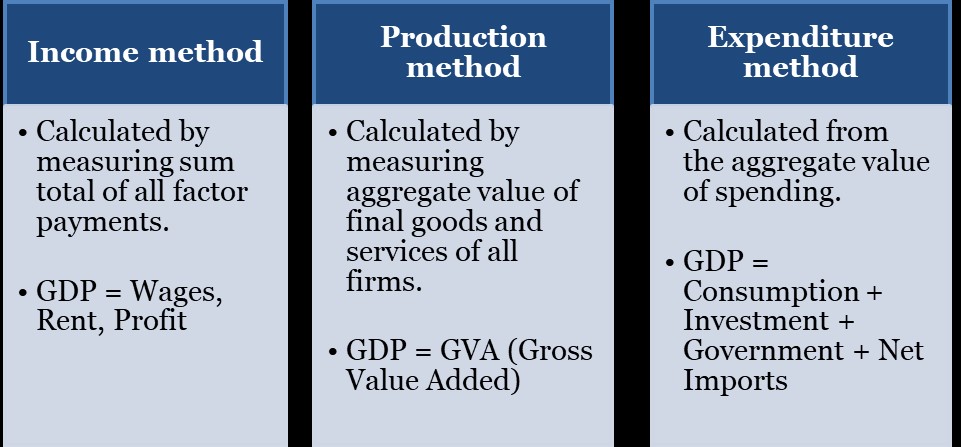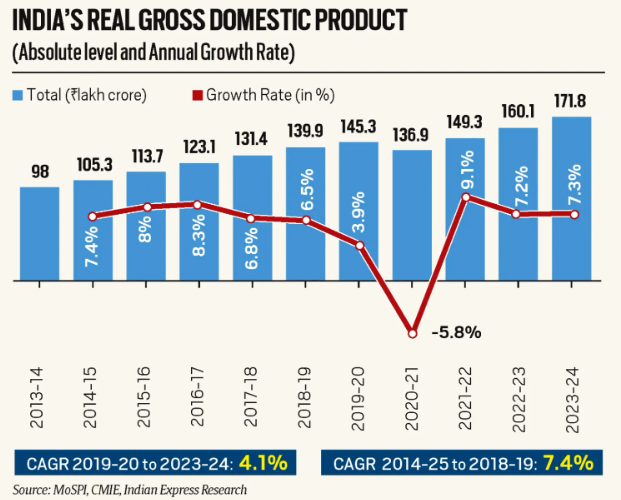Recently, the 1st Advance Estimates (FAEs) released by the government showed that India’s GDP will grow by 7.3% in the current financial year (2023-24), slightly faster than the 7.2% growth in 2022-23.
Base Year is the year whose prices are being used to calculate the real GDP. In 2015, India’s Central Statistics Office (CSO) introduced a new series which revised the base year from 2004-05 to 2011-12.
|
Parameter |
GDP |
GVA |
|
Name |
Gross Domestic Product |
Gross Value Added |
|
|
It is the market values of all final goods and services produced within the territorial boundaries of a country in a given period. |
It is total value of goods and services produced within a country after deducting the costs of raw materials and inputs. |
|
Measurement |
Output, Income and Expenditure approaches. |
By output reach and used as a proxy for GDP. |
|
|
It is internationally expected measure of overall economic growth of the country. |
It is used to measure sector-wise details of economic activity from production side. |
 |
||
Gross National Product (GNP) takes into account the value of economic activities of those who are not residents of the country as well.
GNP = GDP + Net Income Property from abroad

4 main engines of GDP growth – On basis of demand side.
Union Budget is presented on February 1 every financial year. In the year of Lok Sabha elections like in 2024, a full-fledged Union Budget will not be presented.

References